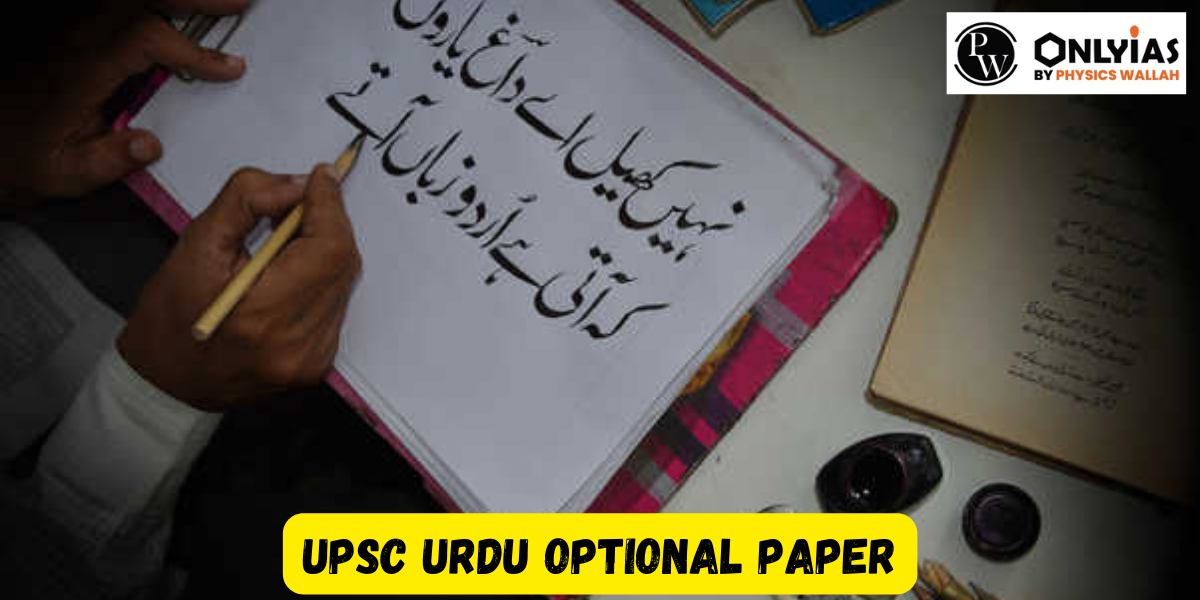The UPSC Urdu optional paper assesses candidates' proficiency in the Urdu language, literature, and culture.

UPSC Urdu Optional Paper: The UPSC Urdu optional paper assesses candidates’ proficiency in the Urdu language, literature, and culture. This optional subject is available for candidates who have Urdu as their mother tongue or possess a strong command of the language. The optional paper consists of two parts: Paper I and Paper II.
Paper I evaluates candidates’ grasp of the Urdu language, including comprehension, grammar, and vocabulary. It also explores the cultural dimensions of Urdu, encompassing its history, literature, and societal aspects. Candidates must be familiar with notable Urdu literary works, renowned authors, and significant literary movements.
Paper II delves deeper into Urdu literature. It covers various literary forms, genres, and critical aspects of Urdu literature. Candidates need to demonstrate an understanding of different periods in Urdu literature and recognize key literary figures. The paper also tests candidates’ analytical and interpretative skills when dealing with Urdu literary texts.
The UPSC Urdu optional paper has witnessed both challenges and successes over the years. Since it is a language-based paper, candidates with a genuine passion for Urdu and those who have invested time in mastering the language tend to perform well. However, the number of candidates opting for Urdu as their optional subject is relatively lower compared to other subjects.
The success rate in the Urdu optional subject varies from year to year. Generally, candidates who secure high scores in this optional paper gain a competitive advantage. Nevertheless, due to limited availability of study materials and guidance, candidates may encounter difficulties in preparation.
In conclusion, the UPSC Urdu optional paper presents a unique opportunity for individuals with a deep affection for the language and its literary heritage to shine. Success in this optional subject is attainable through dedication, comprehensive study, and a genuine appreciation for Urdu culture and literature. While the path may be demanding, the rewards are substantial for those who master the UPSC Urdu optional paper.
| UPSC Optional Paper Related Links | |
|---|---|
| UPSC History Optional Paper | UPSC Public Administration Optional Paper |
| UPSC Marathi Optional Paper | UPSC Anthropology Optional Paper |
In the UPSC Civil Services examination, candidates have the choice to select Urdu as an optional subject. The syllabus for the Urdu Literature Optional in the UPSC IAS Mains exam covers topics such as the origin of the language, critical analysis, and a wide range of literary works.
Preparing for the Urdu optional paper in the UPSC (Union Public Service Commission) Civil Services Examination is a challenging but rewarding endeavor. Here are some steps to help you prepare effectively: 1. Understand the Syllabus 2. Collect Study Materials 3. Develop a Study Plan 4. Read Urdu Literature 5. Practice Writing 6. Analyze Literary Works 7. Stay Updated 8. Join a Coaching Institute 9. Solve Previous Years' Papers 10. Revision 11. Seek Guidance 12. Stay Consistent and Stay Healthy
Fazlu Haseeb, who achieved an All India Rank of 36 and scored an impressive 297 in the Urdu Literature optional subject, which is the highest ever recorded in this category for the Civil Services Examination in 2017, shares his strategy for choosing his optional subject.
The "toughest" optional subject in the UPSC (Union Public Service Commission) Civil Services Examination can vary from person to person, as it largely depends on an individual's background, interests, and strengths. The UPSC allows candidates to choose one optional subject out of a list of approximately 26 subjects.
It's important to note that the difficulty of optional subjects in the UPSC (Union Public Service Commission) Civil Services Examination can vary from person to person based on their interests, background, and preparation. What one person finds easy, another may find challenging.

<div class="new-fform">
</div>